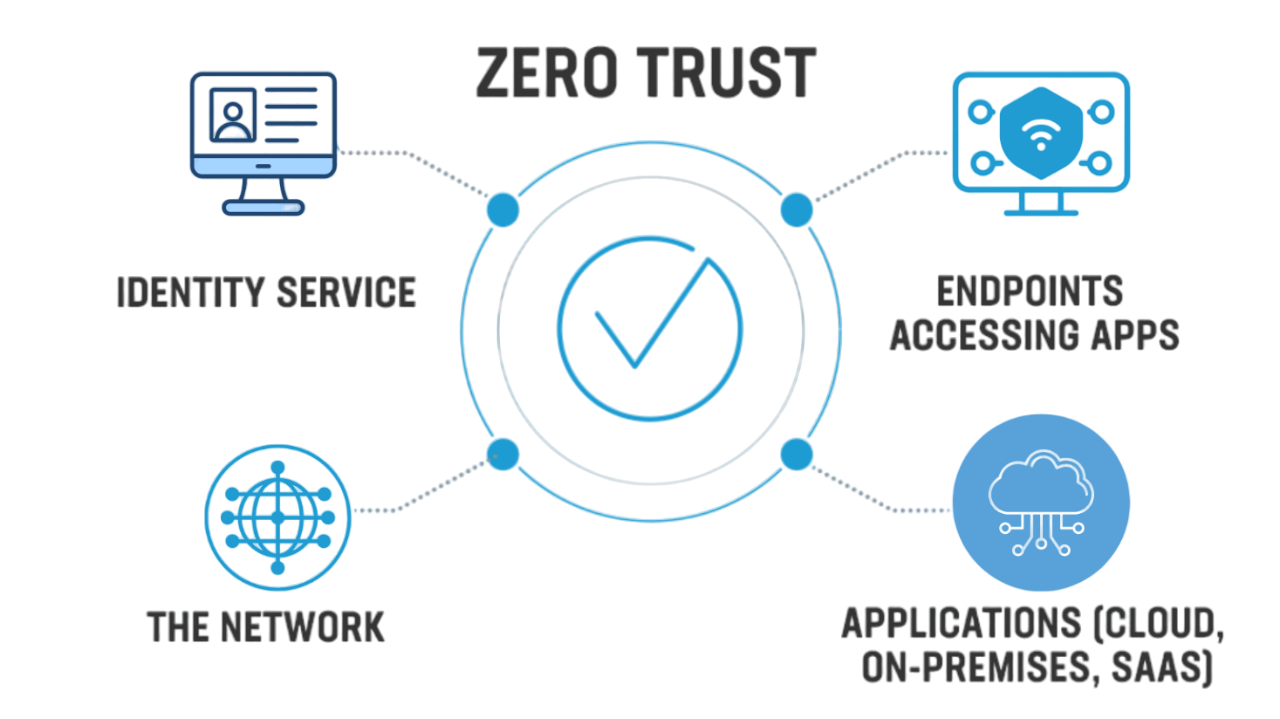
In today's rapidly evolving cybersecurity landscape, traditional security models based on perimeter defense are proving increasingly inadequate against sophisticated cyber threats. With the widespread adoption of cloud services and the proliferation of remote work, the traditional notion of a secure network perimeter is becoming obsolete. Attackers are exploiting vulnerabilities both inside and outside the network perimeter, necessitating a more robust and adaptive approach to security. In this context, Zero Trust Architecture (ZTA) emerges as a compelling solution to address the shortcomings of traditional security models and strengthen defenses in the face of evolving cyber threats.
Zero Trust Architecture (ZTA) is a security framework built on the foundational principle of "never trust, always verify." Unlike traditional security models that rely on implicit trust within a network perimeter, ZTA operates on the assumption that threats may exist both inside and outside the network. As such, every access attempt, regardless of its origin or context, is subjected to rigorous verification and authorization. ZTA challenges the traditional notion of trust based on network location and instead advocates for continuous verification of identities, devices, and applications seeking access to resources.
Key Principles of Zero Trust Architecture:
- Verification of Identity and Devices: Zero Trust Architecture mandates the thorough authentication of users, devices, and applications before granting access to resources. This authentication process typically involves multi-factor authentication (MFA), strong encryption protocols, and certificate-based authentication mechanisms.e
- Least Privilege Access: A fundamental tenet of Zero Trust Architecture is the principle of least privilege, which stipulates that users should only be granted the minimum level of access necessary to perform their specific tasks. This approach minimizes the potential impact of a security breach by limiting the scope of access privileges and reducing the attack surface.
- Continuous Monitoring and Inspection: Zero Trust Architecture emphasizes continuous monitoring and inspection of network traffic, user activities, and access attempts. By analyzing traffic patterns, behavior anomalies, and security events in real-time, organizations can detect and respond to potential security threats promptly.
- Segmentation and Micro-Segmentation: Network segmentation is a key component of Zero Trust Architecture, dividing the network into smaller, isolated segments or zones. Each segment is subject to its access controls and security policies, reducing the potential impact of a security breach and limiting lateral movement by attackers.
- Encryption and Data Protection: Zero Trust Architecture emphasizes the importance of encrypting data both in transit and at rest to protect it from unauthorized access or interception. Strong encryption protocols, data masking techniques, and data loss prevention (DLP) policies are employed to safeguard sensitive information and ensure compliance with regulatory requirements.
Implementing Zero Trust in Cloud Environments
Identity and Access Management (IAM):
- Implement robust IAM policies to control access to cloud resources.
- Utilize multi-factor authentication (MFA) and single sign-on (SSO) to strengthen identity verification.
Network Security:
- Use virtual private clouds (VPCs) and virtual networks to create isolated environments within the cloud.
- Apply micro-segmentation to limit lateral movement within the cloud infrastructure.
Endpoint Security:
- Deploy endpoint detection and response (EDR) tools to monitor and protect devices accessing cloud resources.
- Ensure regular patching and updating of devices to mitigate vulnerabilities.
Application Security:
- Adopt a DevSecOps approach, integrating security practices into the software development lifecycle (SDLC).
- Use container security solutions to protect containerized applications and their environments.
Continuous Monitoring and Analytics:
- Leverage security information and event management (SIEM) systems to aggregate and analyze security logs.
- Use behavioral analytics and machine learning to detect anomalies and potential threats in real-time.
Challenges and Considerations
- Cost: There may be initial costs associated with adopting new technologies and training personnel.
- Integration: Ensuring seamless integration of ZTA components with existing systems and applications can be challenging.
- Performance: Continuous monitoring and verification processes may introduce latency, potentially affecting user experience.
Benefits of Zero Trust in Cloud Environments
- Enhanced Security: By continuously verifying access and minimizing trust, ZTA significantly reduces the risk of data breaches and cyberattacks.
- Improved Compliance: ZTA helps organizations meet regulatory requirements by providing robust access controls and audit trails.
- Flexibility and Scalability: : ZTA supports dynamic and scalable cloud environments, adapting to changing workloads and access patterns.
- Reduced Attack Surface: Micro-segmentation and least privilege access limit the potential impact of compromised accounts or devices.
